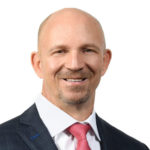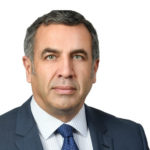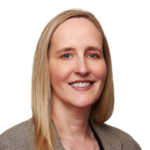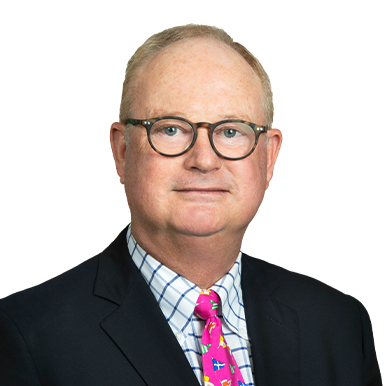Bermuda Finance 2022/2023, ILS Roundtable, in association with EY.
Bermuda remains the world-leader in ILS and as the sector becomes ever-more entwined with other forms of risk transfer, the Island continues to innovate. That was just one takeaway from a roundtable discussion of experts hosted by EY Bermuda.

Q1: HOW WOULD YOU CHARACTERISE THE ILS MARKETS AT PRESENT?
Craig Redcliffe: I’d say we are in a hard market. We’ve seen some substantial price increases. We’ve seen a number of players pull back in terms of capacity or reduce their exposure to the property catastrophe reinsurance sector. As a result of that, we have seen less capacity available to deploy at the mid-year renewals. That’s putting pressure on the pricing. In many cases. Insurance-linked securities (ILS) managers have been able to negotiate not only significant price increases but also on terms such as moving further up into the reinsurance tower and negotiate higher attachment points.
I do think one must question whether the increased rates are sufficient to pay for the claims inflation and the general increased loss activity that we have been seeing the last few years.
Brad Adderley: You could argue, given the losses and inflationary pressures, we haven’t seen price increases at all. Yes, prices are better but if you factor in climate change and the increased losses and inflation, there hasn’t really been a net gain. My view is we need to keep the industry at a place where everyone is making the return they want.
Another issue is that some investors have had money locked up due to trapped capital. Maybe that has caused doubts.
There’s growth but are we where we should be? No. We might get there when we start having markets where you can’t place your risk. Maybe a couple of windstorms will drive change. Maybe by 1/1 you will see rate increases starting to outpace inflation.
Peter Dunlop: I’d agree with a lot of that. We’re also seeing an uptick in disputes. We have to find a solution to trapped collateral. We’re seeing different approaches to tackle this including the securitisation of trapped collateral. The legacy market is ideally placed to step up and take on a market-wide solution to the trapped collateral problem.
It’s undeniable that the issue is diminishing the interest in this space. We are also seeing interest from ILS investors in different lines. I would be happy to be proved wrong but I don’t believe cyber is a good fit for ILS. There are however short tail specialty lines with an investment return horizon that’s similar to property cat that could work.
We’re still seeing healthy levels of cat bonds, but they are not being issued at quite the scale. The spreads are higher, the price is better. But I wonder if investors will look in earnest now at other lines of business.
Taijaun Talbot: If you look at the past five years, there have been challenges. There were a number of loss events, starting in 2017. On top of that, now you have inflation and other wider economic challenges. Despite these things, we have seen a 44 percent increase in registrations of ILS vehicles, as of May 2022. So that is a real positive.
We have seen a shift in the market. There is more of a desire for simplicity and quality. You have obstacles in the market, but there is a sense of maturity around solving them. There is more consideration as to how funds are placed in the market—what their strategy is. Hopefully, that maturity builds something greater than we have seen before.
Helen Souza: I think of the market as resilient but also innovative. Innovation is key to Bermuda and our success. If I think back to 2012, so 10 years ago, ILS Bermuda was formed and a lot of innovation came from that. That is what Bermuda does very well: bringing together industry and driving change to bring business here.
Today, from a growth perspective, I’m an optimist. From a jurisdictional perspective, we are able to be a driver for innovation. I’m very interested to see how technology is going to play a role in the ILS market to drive efficiency and change. We’re seeing some diversification with increased issuance and a move into things such as mortgage bond risk.
Kathleen Faries: I was going to also mention the Convergence conference and its 10th anniversary. It is worth reflecting back on what the market was like back then. It is interesting to recall that the event was called “Convergence”. We were all trying to bridge insurance and capital markets different ways of talking about risk and capital. We don’t even think about this anymore, investors understand the asset class and have become a stable and embedded part of the reinsurance industry.
Bermuda shines when there’s dislocation, when there are hard markets, when people have gaps in coverage. And now after many years of hard work, we have a strong infrastructure, talent, and experience that can be leveraged in order to help client’s solve problems and find capital. At Artex, as a leading ILS facilitator, we are seeing the industry respond to this dislocation with innovation, creativity and ultimately problems getting solved.
Bermuda is able to do all that with speed—this is our differentiator. We’re getting capital to work very efficiently and quickly. It’s an amazing time for Bermuda because we have the capabilities, the infrastructure and the experience to help people.
In ILS, I agree there is an interest to move beyond property cat. We’re going on that journey. There’s definitely a move and technology will play a role.
Just as with property cat over the last 10 years, a big part of it was educating investors. Now they’ve been through some cycles, they’ve seen what can happen. We’re going to have to take that same journey outside of property cat with other lines. But in Bermuda we have the expertise and the experience to facilitate that trend effectively.
Adderley: Ten years ago, people didn’t know what a special purpose insurer was for. We had no cat bonds in Bermuda. We didn’t know how they worked. We took the BMA to meet investment banks to discuss doing business in Bermuda. Those were the days when everyone was using Ireland and Cayman. The regulations then were not right for cat bonds, and it was very expensive.
Souza: Yet now, we hold some 90 percent of the ILS market. It has been a very interesting journey.
Adderley: We have learned so much in that time. We are now seeing everyone try to copy us. Singapore and London have passed ILS regulations. Yet even those bonds are listed on the Bermuda Stock Exchange. We should not underestimate what we have achieved in the ILS space—nor take it for granted.
Q2: HOW WOULD YOU CHARACTERISE INVESTOR SENTIMENT TOWARDS ILS?
Adam Champion: We’re having lots of conversations with investors who are new to the space or in the space already. Some are interested only in investing in balance sheet risk, versus those seeking fee income. We’re going through a unique period right now with managing general agents (MGAs)—underwriters trying to set up their own businesses and leverage their expertise.
At the moment, MGAs are selling for 15 to 20 times book value. However, many MGAs can’t get fronting paper, reinsurance capacity, or working capital. As a result, given the broader market conditions, you’re going to see more interest in this fee-driven business. Whether it’s preferring claims administration or underwriting on a fee basis, many investors prefer this to balance sheet risk—even though they’re multibillion dollar institutional investors.
We are seeing an absolute hunger for non-correlated risks to the equity markets, and while that has always been the driver of capital to the ILS space, it’s even more so now. Over the last six months, there’s been no safe harbour, whether it’s equities, bonds, or fixed income, and investors are just desperate for non-correlated returns.
And while many investors have moved beyond the concerns of trapped capital, we are still seeing the balance between collateralised risk versus fronted risk flip over the last five years. There are very few ILS funds which are fully collateralising all their risks now. There’s been a continuous shift towards fronted and rated business.
That also ties in with investors who want alternatives to property cat; they’re recognising very quickly that very few non-property cat lines of business work on a collateralised basis.
Nick Jagoda: From a rate adequacy perspective, the collateralised space has the benefit of repricing risk on a 12-month basis as opposed to looking at something on a static basis. There’s optimism that inflation is being built into pricing with adequate buffer to compensate for what could be additional inflation.
Trapped collateral remains a challenge for the market. It is certainly easier to address it in a hardening market through terms and conditions. Whether it is through improved buffer loss factor tables or sunset clauses, there’s a lot that the market has done to alleviate that pain. But this remains a headline topic for investors.
Counter to what has been said today, I don’t think that the fronted model offers an obvious solution to trapped collateral. I spent many years operating within a largely fronted model and there certainly are trapped collateral issues associated with that. Ultimately there is still collateral supporting a basket of risk and fronting carriers don’t want to be left holding the bag by relieving a fund of its liabilities. This issue was exacerbated in recent years.
Regarding the topic of non-cat risks, we’ve had interest from investors with respect to things beyond the pure cat space. However, there is a steep learning curve. We have spent a significant amount of time educating folks on the cat space and expect there will be a process associated with educating investors on other non-cat risks and the utility they may have for their portfolios.
People need to go into the non-cat space with eyes wide open, understand the various mechanisms available to access the market, and understand the supply and demand dynamic. In the end, for some investors, the diversification to cat alone is attractive because of the diversification it provides across a broader global investment portfolio.
Edouard von Herberstein: The collateralised market has shrunk and continues to shrink for all the reasons that we know. Even the ILS market has slowed down quite significantly in the last three months, which nobody expected, but people are concerned about the same issues. That is convergence.
I agree on the appetite for diversification and opportunities outside of cat. There’s not a single line of business now that hasn’t in some way been accessed by the ILS market. We’re even seeing investors looking at legacy business.
The brokers are educating themselves with how to structure a casualty or a cyber deal that fits the ILS investor. It’s not happening as fast as I’d like to see, given the amount of people working in that space and all the money flowing into MGAs and service companies.
For example, the tools available in cyber today remind me what we saw in the late 1990s around cat. A lot of people who worked on cat models are focused on the cyber sector now, and that sector will see massive growth.
The ILS market has an important role to play in cyber. Just like the mortgage market, there is a role to play and there is definitely demand for capacity beyond the traditional market.
Bermuda thrives when the world struggles. I believe that 100 percent. In the last 20 years, I’ve seen expertise coming to Bermuda with speed of execution, but also capacity. It amazes me when I see the exciting opportunities.
Financial lines, specialty lines, casualty liability, they come here. Why? Because the people with the big cheque books are here and we can move quickly.
If you ask brokers, they bring new ideas and problems to solve. They come to Bermuda. And that’s super exciting for Bermuda. They’re asking all the right questions and
I am excited about today’s ILS market. As people have exited the cat market, pricing and values have risen. We are watching that closely.
Laura Taylor: The market is more dislocated than 2006 and June renewals are still ongoing with many not being able to secure capacity. We forecast there will be further impact in Florida as these trends continue and we’ll see not only increased pricing but also a shortage of capacity in January.
Similar to a post-credit crisis, when the broader financial markets struggle, the value of truly non-correlated assets increases. However, investors are rightly asking challenging questions about climate change, deficiencies in the industry cat models, inflation and fraudulent claims and they expect to be compensated for these uncertainties.
The industry needs to do a better job of articulating how it is pricing for these things to assure investors that they are receiving an adequate return on the risk.
Peter Dunlop: Based on the inquiries we receive, it feels as though the potential for disputes has increased between third party capital investors and whoever is, say, managing their sidecar. So far, managers and investors have taken a commercial approach to avoid full-scale disputes but if conditions do not improve we could see more arbitrations taking place, which no-one but the lawyers wants. There is an enormous range of what it could cost the industry.
Brad Adderley: In 2006 we saw startups and sidecars. Could we see new capital, new startups come to market?
Taylor: The industry is facing barriers to raising new capital right now given the performance over the past five years, the industry’s response to it, and volatility in broader markets. The industry needs to do a better job of demonstrating sufficient pricing and to do this you need data.
This is a barrier to new startups but even incumbents need to show that there is sufficient pricing for climate change, inflation, social inflation, and other unmodelled risks.
Pricing has increased partly because the view of risk has changed but the required return on capital has also changed. The cat market is competing with volatility and returns of other markets and needs to demonstrate attractive returns and diversification to attract new capital.
Kathleen Faries: That’s what we need. The markets that are taking certain cat risks need to lead in terms of what is adequate pricing. If you want capital to come in, investors need to know what pricing needs to be. It needs leadership.
Adderley: It’s interesting that there has been business which wasn’t placed in the renewal. Do we think people will now try to renew books of business early in the context of the 1/1 renewal? Could the year-end renewal be done early—or will people wait and see what happens in hurricane season? But if cedants wait, could they end up paying even more?
Taylor: Yes, we’re seeing cedants who are discussing 1/1 renewals now but expect the market will wait as there is little upside to binding part-way through the year. Overall TIVs are growing, and it is too early to determine required pricing. The required return on capital will be dependent on the wind season but also broader market dynamics.
Faries: Given these additional risks, does the industry have adequate data? Compared with 10 years ago, which was a very different time, do we have adequate data to have that conversation with investors and convince them we can get rate adequacy?
Adderley: People always think they have adequate data before a surprise comes along.
Faries: How are the vendor modelling companies doing in terms of developing better models?
Champion: That is the big question when it comes to property cat. The industry for a long time has had a consensus that the models represent a baseline view of risk that everybody can build from. That sort of dynamic does not exist in other lines. Where we have previously seen money raised to take property cat risk, that money has now gone to established multi-line companies with a solid track record.
As a result, these multi-line writers are trying to build similar style pricing models, but it is much harder to model these other types of short tail risks such as cyber.
Jagoda: The concept of rate adequacy and adequate data is a constant evolution. While you might be comfortable today, tomorrow the price might no longer be adequate. All we can do as an industry is keep investing in relevant data and research efforts, while at the same time providing transparency with investors about how we price for evolving risks.
With respect to how investors determine whether they are achieving adequate returns for the risks assumed, we need to consider that no two investors have the same required rate of return and they will often employ different benchmarks when considering the relative attractiveness of the risk/return opportunity within the ILS market versus other markets.
With respect to innovation in the reinsurance space, the market is doing a good job as can be seen through new products and structures to address new and evolving risks. It is important that we continue to invest in innovation. There is a constant push and pull of being reactive versus proactive in the space. Innovation requires taking a proactive approach and I’d argue the market right now is being as proactive as it possibly can.
Tying together various themes discussed, we are seeing much more disciplined underwriting, and much more disciplined deployment of capital. That’s not just in ILS but across the whole reinsurance market, even more so than in 2006. Perhaps the difference is we have better data now. If you were to compare risk/return profiles from 2006 to today, it’s apples and oranges.
Von Herberstein: It’s good news for Bermuda. There have been times when we have been over reliant on the models. Maybe some investors thought they could write business themselves using the models alone. That hasn’t worked. What has come out of the last five years is the complexity of the insurance market. You need more than just data. The idea that you can write cat business using models alone is a dangerous one to say the least.
There are so many markets where the data is inadequate anyway, in Latin America and Asia, for example.
Cyber is much harder to model. The reality is that it doesn’t matter how much you invest internally, you need the experts. There are some amazing tools, but you need to understand and interpret them. Investors are learning that and it’s good news for Bermuda.
Dunlop: What interests me as a legal adviser is the innovative stuff, whether that is around climate or greater distribution or better analysing and pricing risks with improved use of analytics and data. It is not just about selling more policies, it is about addressing unmet problems through a more innovative approach to insurance risk.
That is what is really special about Bermuda—the intellectual capital and grasp of analytics puts Bermuda way ahead. Hats off to Hudson Structured for its work in insurtech and insurtech investing.
Von Herberstein: You’re seeing it happening in insurtechs. You need the data people and the insurance people working together.
Helen Souza: Those are the seeds we’ve been planting in the technology space and green shoots are now emerging. We are seeing a lot more insurtech companies set up in Bermuda. We are also becoming a beta testing domicile for climate data. From an intellectual capital and expertise perspective, it’s good to have the humans and the data. There’s a tonne of data, the question is how we store it and use it.
Taijaun Talbot: We have seen many entrants talk a lot about data, but the key innovation is around how we interpret that data. The real innovation is how we can leverage artificial intelligence (AI) to interpret the data. There is a lot of exciting innovation taking place. I spend a lot of time discussing new innovative vehicles and structures, and everyone sees Bermuda as the place to come to test ideas and platforms.
Within that innovation, there is a greater appetite among ILS investors to look at new risks. I do think those new risks will emerge, certainly they are being looked at from a regulatory standpoint. We are seeing a lot of interest in new risks.
Dunlop: There is now a real convergence between crypto and insurance. We see many new insurtechs exploring the use of tokens to raise risk capital and one day we will be seeing insurtechs receiving premium and paying claims in cryptocurrency. On Bermuda, the advantage is we have one regulator to regulate everything, whether it’s crypto or insurance, so there is a combined regulatory mindset more easily applied to both regulated streams. There are so many great ideas from clients coming through.
Adderley: The first ILS vehicles targeting the crypto space are being formed, which is very interesting. We are also seeing ILS players looking at using artificial intelligence. That would be interesting.
Ten years ago we were discussing convergence, now we are seeing the convergence of data analytics, crypto and insurance in one place. Because of the BMA’s Sandbox, these ideas are being tried. Clients want you to be regulated. They need that to raise capital. This year you will see a lot more of that: insurance, crypto, and ILS all coming together.
Souza: There is no doubt that Bermuda is the risk capital of the world and we’re now positioning ourselves as the emerging climate risk financing capital. We’re known as a reinsurance powerhouse, but we’re probably more a powerhouse of innovation. Over the last few years that’s been very evident in some of the things that have emerged.
Adderley: It’s interesting. We always talk about creating a new pillar for Bermuda’s economy. We have reinsurance on many fronts. We have ILS. We had lost funds but, because of ILS, some of those are coming back now. The same is true because of crypto.
Faries: Ten years ago, we were asking if some of the capital in ILS would stick around after a loss or run for the hills. Nobody talks about that any more. We know that most of the ILS capital is committed for the long term. Obviously, there are ebbs and flows but as an asset class, this capital is committed and sophisticated.
Champion: The difference is that these institutional investors have now been educated. They’ve experienced good and bad periods but they’re still committed to the space and are looking for more opportunities. Getting fresh capital is hard, but the committed capital wants to hear about opportunities—and they want to try to do more outside property.
It’s an evolution. We used to be asked about liquidity but that is very rare now. And that means, as we move into specialty lines, that investors are more willing to leave their capital there for longer—for many years. However, they still have concerns about the uncertainty associated with longer tail losses, but their investment horizon is absolutely expanding.
Faries: Some of the asset managers should take credit for developing this space and educating investors. They did the hard work in the industry. The lawyers, service providers, and others deserve credit too, but the ILS asset managers are the ones that drove the interest in the asset class and education of investors forward.
Q3: WHERE ELSE ARE WE SEEING INNOVATION IN ILS?
Laura Taylor: The climate side is interesting. We have developed products to enable the building of wind and solar farms and there is continued interest from investors in products investing in renewables and environmental, social and corporate governance (ESG) business.
Taijaun Talbot: I agree that the funds had a big influence on the growth of the market and strategy. They also helped inform the wider supervision, the regulatory conversations. Back then, actuaries were at the heart of the conversation. Now, we also have an ESG team, the innovation team, the fintech team. As a regulator, we have had to expand our expertise in order to keep pace with the evolution of ILS.
Brad Adderley: It is worth reflecting on the accuracy of data. Who would have predicted the interest rate rises this year? What about inflation? Who would have thought the June 1 renewal would be so difficult? What is the next six months going to bring? I wonder what investors will make of this.
Adam Champion: I agree. A significant hurricane is probably the most predictable thing that could occur right now, while an earthquake would of course be a surprise, especially as it is seen as an attractively priced diversifier. And then there’s the increasing risk of so-called secondary perils.
Whether it’s floods in Germany or Australia or wildfires or winter storms, we have seen the pitfalls of data adequacy. For hurricanes the science is behind it and there is more of an industry consensus on price, but there are so many other uncertainties across the other perils.
Will investors leave? We saw waves of capital come in previous hard markets. Everyone assumes that when another big event happens, capital will freely flow into the space. Most recently, in 2018, money did come in but the market didn’t respond the way they expected it to, and therefore some left over the last five years.
I believe those who stayed see it as a core long-term investment. There are far fewer untapped sources of capital now than before, but pockets still exist. The ILS market has matured and grown exponentially more quickly than many other non-correlated financial markets.
Investors are more disciplined today on how they’re going to deploy capacity. They’re much more informed. Managers are telling them where other opportunities exist and when the prior opportunity is no longer interesting. That results in a more sustainable market.
Therefore, we would expect pricing to remain at a good level and the opportunities to respond to the data as it evolves.
Peter Dunlop: The primary growth area for me is climate. The Bermuda Business Development Agency is pushing the agenda for Bermuda as the climate risk capital of the world. We are seeing a significant uptick in climate-related insurers and even some new dedicated ILS funds. Bermuda has led the way in addressing the protection gap and, especially with the tool of parametric coverage, has flexed to address climate risk by providing risk solutions that are not just catastrophe coverages.
Proxy revenue swaps, to name just one product, provide an ILS solution to agriculture companies by way of a financial smoothing of results that mitigate the effects of weather events and assist to avoid the a catastrophe loss from ever taking place. Bermuda is at the vanguard of those kinds of risk solutions.
Champion: It’s clear that property cat has proved itself to be less short tail and less definitive in its ability to predict and determine losses quickly. As we expand beyond property cat, you’re opening yourself up to even more complicated losses that develop over longer periods of time. And while the market wants to go there, there will be a learning process and there will be some pain.
Florida has been at the heart of the issues on property cat. There have been legislative changes which are a step in the right direction and there are more changes coming over the next six months. We are bullish as a company on Florida and we think the opportunity outweighs the risk, but this wind season is going to be an interesting one, to put it mildly.
Nick Jagoda: The view of risk continues to evolve and consider new and different risks. This has led to general increases in expected losses throughout the market. The well documented supply chain challenges and the various effects this has on claims inflation is just one of many examples which highlights the evolving nature of the risks we assume within the market.
Talbot: In terms of the point about the duration of the risk and how long collateral is at risk for, that has clearly become extended in the eyes of investors. Trapped collateral caused this. I wonder if there has been a shift in the mindset of investors whereby they are willing to accept that and thus maybe other risks such as short tail casualty as a result.
Champion: The experience in property was not positive for many but it has opened up the conversation and shows that many investors are committed and educated in the space. It’s probably not as short tail as they thought, but it has opened up conversations around short tail casualty, specialty lines.
Many are extraordinarily hungry for non-correlated returns and they are open to looking at these opportunities. ILS investors do not see this as a purely opportunistic play where they want to come in for a year—the conversation has broadened.
Jagoda: I agree there have been challenges, but a disproportionate amount of the issues can be attributed to Hurricane Irma which may have exposed challenges around reserving practices throughout the industry. Ultimately, a lot of this is Florida-specific. You don’t have the same development on a non-Florida hailstorm for example.
Irma was not something we want to repeat, but cat is still a short tail line. The idea of writing casualty or certain specialty lines remains largely untested within a pure collateralised vehicle.
Champion: Real improvements have been made to address the issue of trapped collateral and that has been a focal point for every ILS manager.
Jagoda: A lot has been done with terms and conditions. For example, buffer loss tables have evolved over time to provide enhanced liquidity and capital efficiency.
If you write 12-month contracts but have collateral unnecessarily trapped you then have to consider opportunity cost of not redeploying capital which is not a good outcome. In this scenario, it would make earning an adequate rate of return very difficult.
Dunlop: Exit strategies are being looked at. The run-off sector has looked at this issue, but it has not happened yet.
Jagoda: In cat, you don’t get the same float as you’re going to have in the casualty market. Also, the run-off sector was spooked by what happened with loss development from Irma and in the Florida market in particular. The investor community has responded to the issues of trapped collateral and poor reserving practices.
Champion: The collateralised model has always been good at dealing with stressed parts of the market such as has been the case in retro and Florida. If there’s less stress, there’s usually more capacity available in the traditional market.
Jagoda: Bermuda remains at the epicentre of the ILS market. It is one of the top jurisdictions where young professionals sit shoulder to shoulder with senior executives learning this space. Other than in Zurich, London and Bermuda, you’re just not going to get the same access to professionals or the same education in the workplace. Bermuda has been at the epicentre of pushing innovation and change.
Q4: ARE THERE ANY THREATS TO BERMUDA’S STATUS?
Brad Adderley: I always like to remind people that clients have a choice. They can go anywhere they want, so we can’t be complacent. There are more jurisdictions targeting ILS all the time. You have Singapore and London now targeting this business. The dialogue between ourselves and the BMA is of paramount importance to ensure we always have the right regulation and we are attractive. But we also know that everyone looks at us and then tries to improve it.
Peter Dunlop: Life reinsurance business is increasingly a focus of ILS and we are seeing startups in that space go elsewhere because of improved regulatory capital requirements in those jurisdictions. The problem for Bermuda is that competing with other jurisdictions on regulatory capital requirements becomes a race to the bottom.
We want to avoid that. We need to maintain high standards; we want to be a responsible jurisdiction that will as a central focus ensure that our insurers can and always will pay claims.
Taijaun Talbot: We need to always be looking at ourselves and asking how we can be better and more responsive. In 2019, we made some wholesale changes to our framework but those were the first in a long time. We need to ensure we remain innovative and responsive. I always say to the team we need to be moving fast, to stay on the front foot as much as possible.
If we can make a regulatory framework that works for the market, we have the experience and expertise to grow along with the market. That is more important than looking at the rest of the world.
Laura Taylor: You’re right. When we did our first transformer vehicle it took about a year. But it was a partnership between us and the BMA to find a way to get it done. It required balancing risk tolerance and innovation and they were willing to invest the time to understand what we were looking to do while helping us innovate and maintaining strong governance.
Helen Souza: This is very important in Bermuda. Even though some of us may compete in business, we all stand shoulder to shoulder to ensure the success of the industry and the success of Bermuda. It is important that we do not become complacent. Our ability to stand together and innovate is the reason we continue to be the epicentre of risk and successful.
Craig Redcliffe: I agree—complacency is something we cannot afford. We need to continue with that same relentless focus we have had over the past decade. There are always competitors looking for us to make a false step.
We’re doing all the right things. Our regulator is very balanced and well respected worldwide, we have proximity to key insurance markets, a large pool of talent in both insurance and asset management which are both important to ILS, among many others. We just need to continue with that focus.
Bermuda has been known as an innovative jurisdiction—that is something we cannot lose.
Kathleen Faries: Bermuda needs to be thinking about the future. Things are evolving. We need data scientists in Bermuda, we need developers and young people who are passionate about climate risk. There’s an opportunity, but it’s also a risk if nobody’s focused on it. We have to give young people a reason to stay in Bermuda when they graduate.
The industry is evolving and so is the talent we need. If Bermuda is about the expertise and experience of the talent based here, we have to keep evolving.
Edouard Von Herberstein: When I first heard about Bermuda looking at blockchain and cryptocurrency I wondered if that was the right move, but I am now a convert. Many are friends. And that is innovation. They are doing some amazing things with crypto trading platforms which will also help find capital, insurance and reinsurance and attract investors.
I agree that we need to be attracting the right people who need insurance to build their model for future industries.
Faries: I agree on the importance of ESG now. But insurance is at the core of ESG.
Von Herberstein: Cyber is another area which will become so important. What’s happening in cyber is so big and evolving so fast, we’re not going to solve the whole thing. Yet if we don’t play a role, we become irrelevant. Bermuda is doing exceedingly well, but the truth is also that traditional insurance products are being challenged in today’s world to cover many new, less tangible risks.
The cyber market will find the solution if the insurance market doesn’t step up. It is the same for crypto companies. That’s the danger. We can congratulate ourselves on doing well on cat business but the world keeps moving and we need to offer new solutions.

















